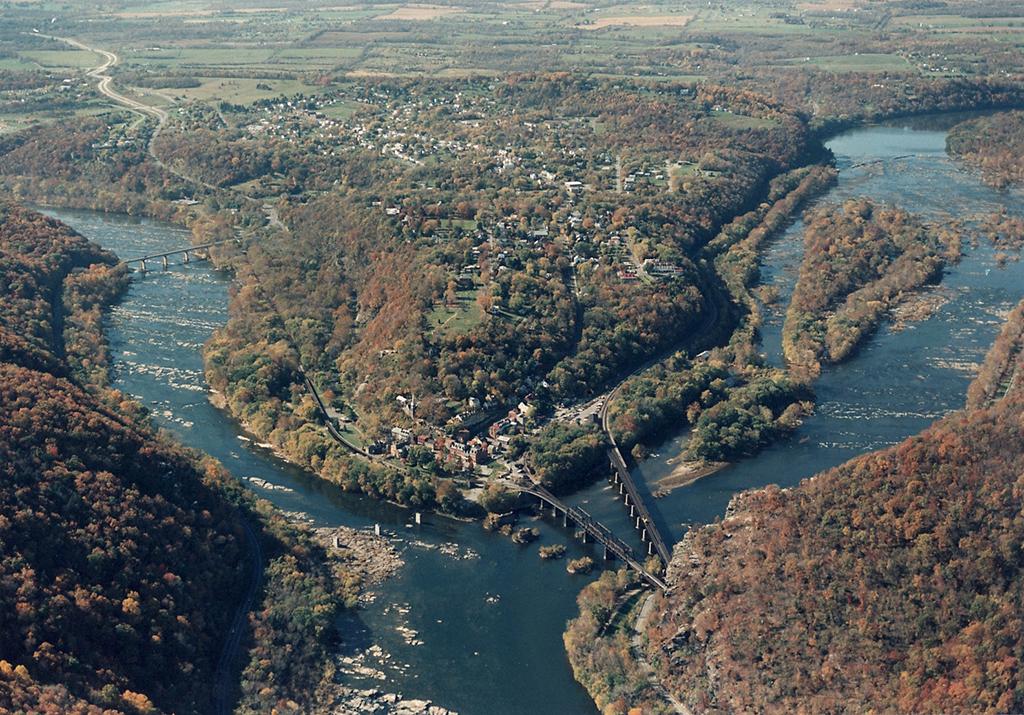
Aerial View, Harpers Ferry National Historical Park / National Park Service
I admit to being biased. I love those landscape vistas with some sort of topography. At some point, though, I realized I was neglecting (and missing out on) the National Park System’s many historical units. Ok, every national park unit has some history associated with it, but you know what I mean.
This Quiz And Trivia #15 piece is all about our national historic / historical sites and parks. The information for the questions and trivia was taken from previous articles published in the Traveler, with bits and pieces added from the NPS.gov site for each of these historical units. See how much you know before checking the answers at the bottom of this piece. Then take a look at the references, the majority of which are the Traveler articles and definitely merit a read.
1. Harpers Ferry National Historical Park is rich in Civil War history. It was here, in April 1861, 10 days after Virginia seceded from the United States, that:
a) The Battle of Harpers Ferry was fought
b) John Brown led a raid to initiate a slave revolt
c) The United States Armory was established
d) Thomas "Stonewall" Jackson assumed his first command for the Confederate army
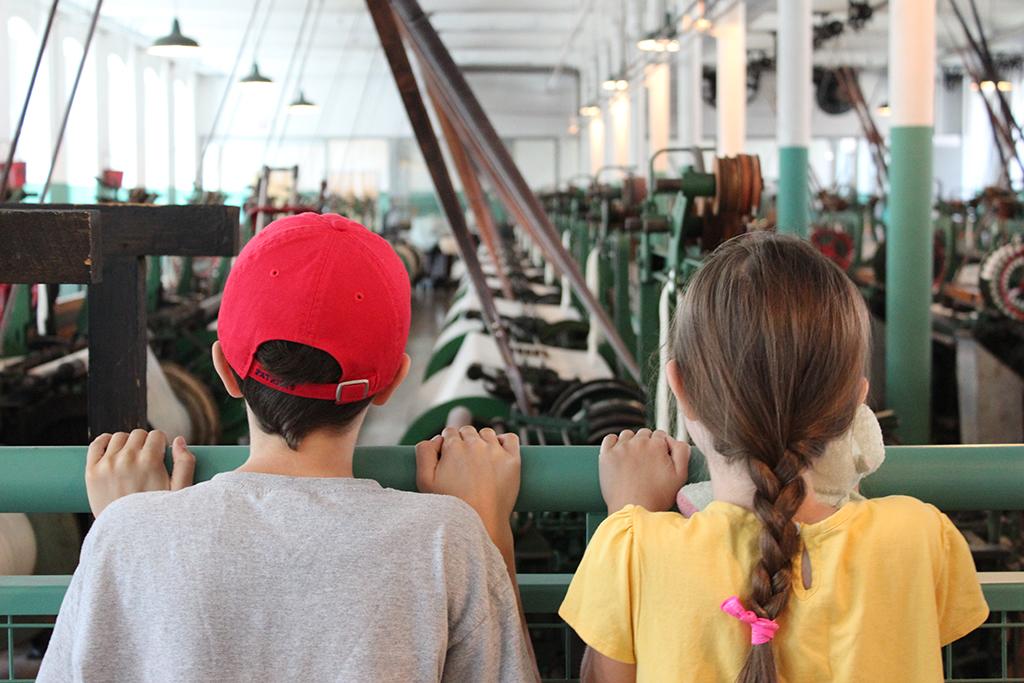
The Next Generation Viewing The Boot Cotton Mill Weave Room, Lowell National Historical Park / National Park Service
2. Lowell National Historical Park, is “a living monument to the dynamic human story of the Industrial Revolution.” Inventions such as the multi-spindle machine for spinning wool and cotton helped “revolutionize the production of textiles.” These machines went by another name:
a) spinning jennies
b) cotton gins
c) water spinners
d) water frames
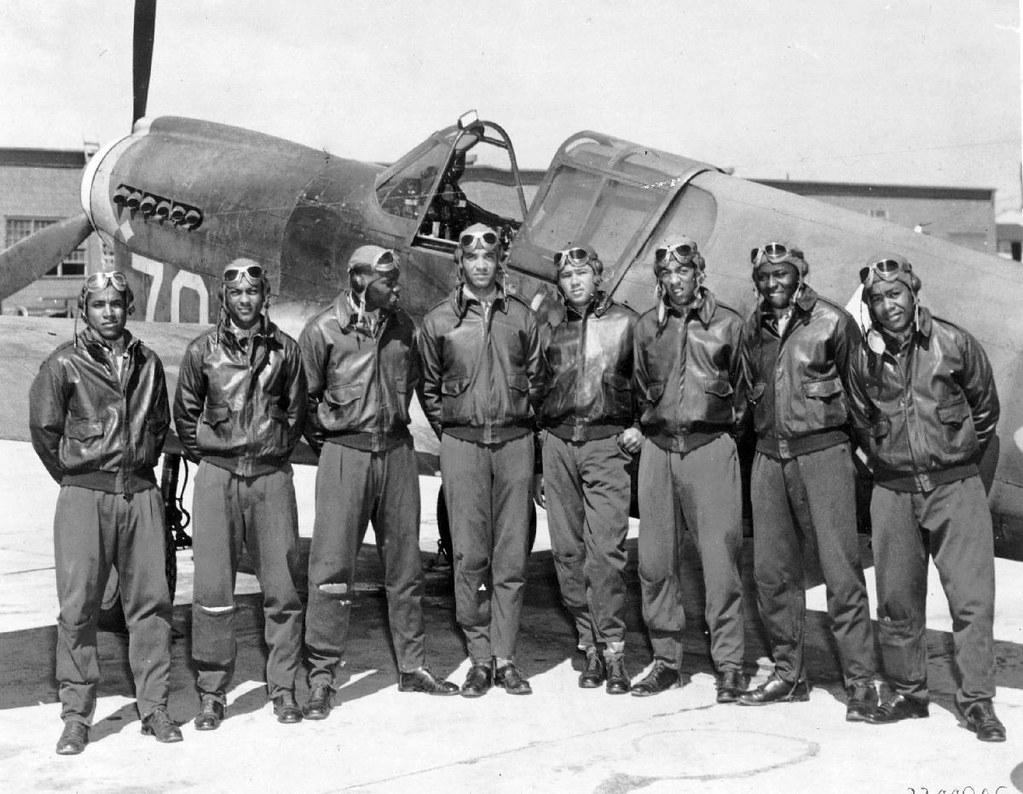
Posing With The Plane, Tuskegee Airmen National Historic Site / San Diego Air And Space Museum Archive
3. During World War II, bomber crews named the Tuskegee Airmen “Red-Tail Angels” after the red tail markings on their aircraft. They were also known as “Lonely Eagles.” The German Luftwaffe even had a nickname for them:
a) Midnight Men
b) Thunder Clouds
c) The Ravens
d) Blackbird Men
4. The Andrew Johnson National Historic Site preserves the life story and architecture of a man who, as President of the United States of America, was the first ever impeached, vetoed more bills than any other president before him, purchased Alaska from Russia, and:
a) Signed the Homestead Act
b) Started the Easter egg roll on the White House lawn
c) Was apprenticed to a mill owner
d) Passed the Tenure of Office Act
5. Kalaupapa National Historical Park is a place to “learn about the breadth and depth of historic resources at the park, including landscapes, historic buildings, museum collections, and more.” King Kamehameha V banished all afflicted with __________ to this remote peninsula on the north shore of the island of Molokai:
a) Smallpox
b) Bubonic plague
c) Hansen’s disease
d) Typhoid fever
6. The Allegheny Portage Railroad is one of the world’s first:
a) interurban railroads
b) funicular railroads
c) plateway
d) rapid transit
7. Which national historic site or park comprises the oldest European construction in the National Park Service?
a) San Antonio Missions, Texas
b) San Juan National Historic Site
c) Christiansted National Historic Site
d) Salt River Bay National Historical Park
8. Which First Lady is the only one to have a National Historic Site dedicated to her?
a) Ladybird Johnson
b) Mamie Eisenhower
c) Eleanor Roosevelt
d) Martha Washington
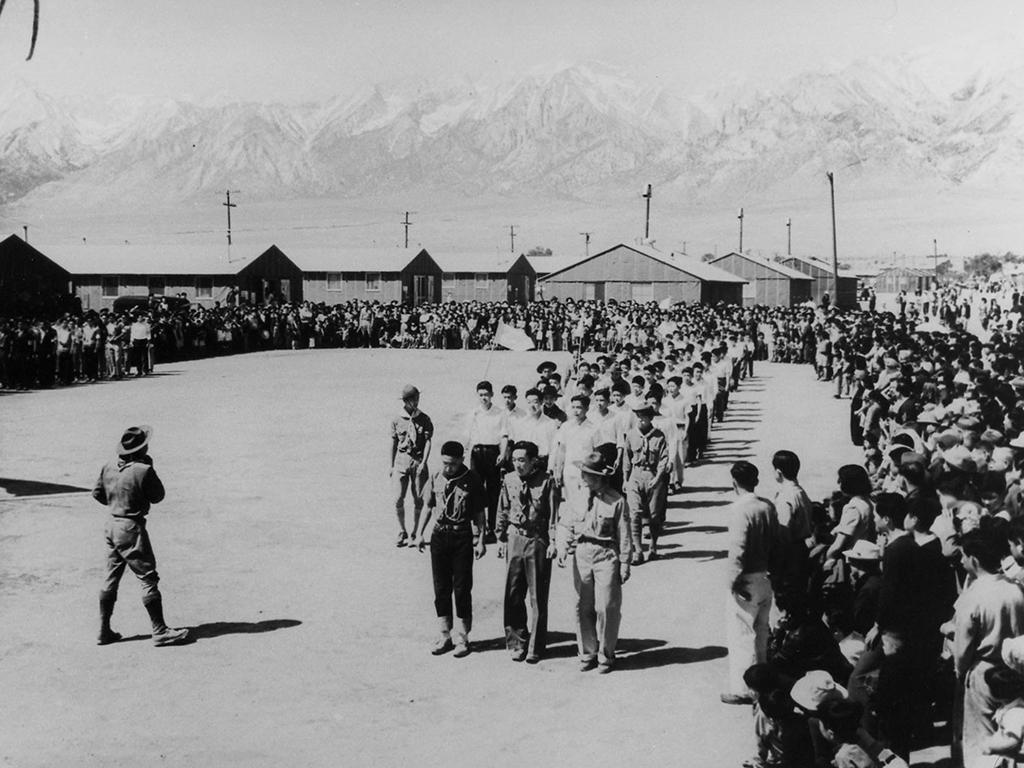
Memorial Day Services At Manzanar, Manzanar National Historic Site / Francis Stewart
9. “In 1942, the United States government ordered more than 110,000 men, women, and children to leave their homes and detained them in remote, military-style camps. Manzanar War Relocation Center was one of ten camps where Japanese American citizens and resident Japanese aliens were incarcerated during World War II.” Manzanar National Historic Site tells the story of these lives. But, long before it became the area on which was built an internment camp, it was a thriving town that grew around a particular fruit:
a) apples
b) oranges
c) lemons
d) cherries
10. Golden Spike National Historic Site is located at the place where the ceremonial final golden spike was driven to symbolize the completion of the first transcontinental railroad in America. Now, just where *is* that location?
a) Promontory Point, Utah
b) Promontory Peak, Utah
c) Promontory Summit, Utah Territory
d) Promontory Hill
Trivia
Morristown National Historical Park is famous for where “General George Washington and 10,000-12,000 troops spent what's believed to be the coldest winter on record. Though the winter encampment of 1777-78 for the Continental Army at Valley Forge draws much attention, the following winter in central New Jersey was actually much, much harder for the Colonials. It was so cold that winter that the Hudson River reportedly froze so hard and so thick that cannons hauled across it didn't crack the ice. To stay warm, the 10,000-12,000 troops that descended on the the Henry Wick farm struggled through snow 2 feet deep, and drifts much higher, as they chopped down more than 600 acres of trees to build more than 1,000 small log huts and to keep warming fires burning through the days and nights.”
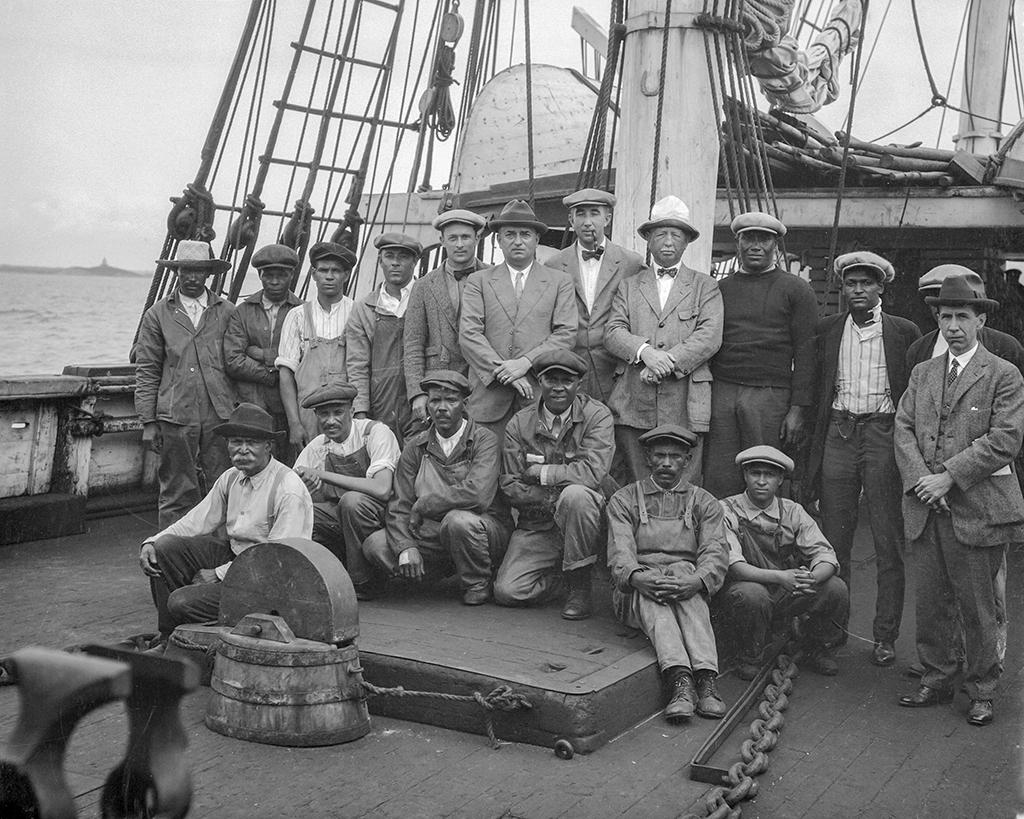
The Wanderer Crew, New Bedford Whaling National Historical Park / National Park Service
“In the mid-19th century, the whaling industry turned New Bedford into a bustling, cosmopolitan seaport community, and one of the richest and most diverse cities in the world. During the 1840s and 1860s, New Bedford became a haven for slaves seeking freedom because of its opportunities for employment presented by the whaling industry, a large Quaker population and free population of color, and a coastal trading system that provided escaping slaves the chance to hide on vessels heading to New Bedford from southern ports. Once in New Bedford, some escaped slaves hopped on boats heading to Alaska to better guarantee their chance at freedom. The most famous passenger on the Underground Railroad to arrive in New Bedford was Frederick Douglass. Born a slave in Maryland, he quickly rose to prominence as an abolitionist and anti-slavery speaker after his arrival in New Bedford.“ New Bedford Whaling National Historical Park explores the history and culture of a city that is “not just the capital of the 19th century whaling industry,” but also tells stories about the “Underground Railroad, immigration from global communities, textiles, and the history of commerce.”
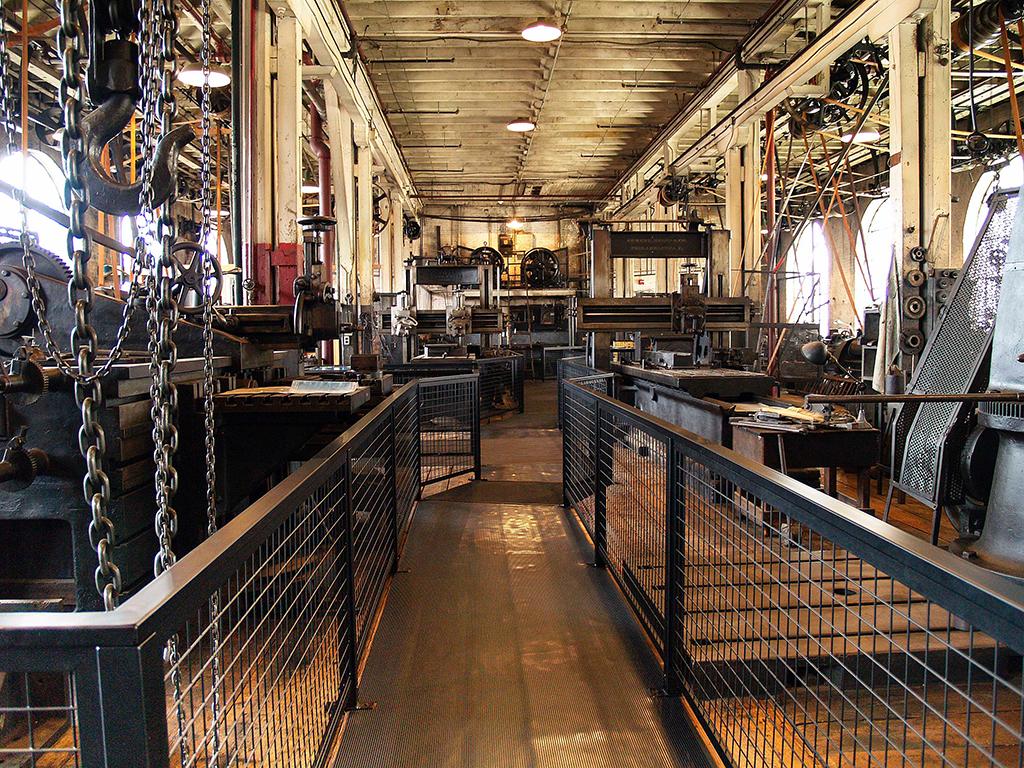
First Floor, Building 5, Heavy Machine Shop, Thomas Edison National Historical Park / National Park Service
Recorded music, movies, and electric lighting are only a few of Edison's contributions to technology. The inventor earned 1,093 United States patents, a record number for one person that still stands. At Thomas Edison National Historical Park, you can explore the laboratory complex, where Edison worked from 1887 until his death in 1931, and visit Glenmont, the Edison estate located about one-half mile from his laboratory complex.
“Edison had very little formal education as a child, attending school only for a few months because his teachers thought he was very slow. He was taught reading, writing, and arithmetic by his mother, but was always a very curious child and taught himself much by reading on his own. He never attended any technical school, college or university.
Edison did more than invent… Edison could think of ways to make a better phonograph, for example, build it with his muckers [his assistants], have them test it and make it work, then manufacture it in the factories that surrounded his laboratory. This improved phonograph could then be sold throughout the world. Historians have called the research and development laboratory Edison's greatest invention.
Not only did Edison improve the phonograph several times, but he also worked on X-rays, storage batteries, and the first talking doll. At West Orange he also worked on one of his greatest ideas: motion pictures, or "movies." The inventions made here changed the way we live even today.”
Quiz Answers
1d
“Thomas ‘Stonewall’ Jackson assumed his first command for the Confederate army. He would later return to the town, in September of 1862, to maneuver his forces to capture key points surrounding the town, places such as Maryland Heights, Loudoun Heights and School House Ridge. That strategy paid off for Gen. Jackson, as the Confederates surrounded the town and forced the surrender of 12,500 Union troops -- the largest Union surrender in the entire Civil War.”
2a
Spinning jennies. On a side note, improved mechanization, cheap water power, and cheap labor helped the city of Lowell become “America’s first successful planned industrial city.”
3d
Called “Blackbird Men” by the German Luftwaffe, “the Tuskegee Airmen were awarded numerous high honors, including Distinguished Flying Crosses, Legions of Merit, Silver Stars, Purple Hearts, the Croix de Guerre, and the Red Star of Yugoslavia. A Distinguished Unit Citation was awarded to the 332nd Fighter Group for ‘outstanding performance and extraordinary heroism’ in 1945.”
4b
President Johnson started the Easter egg roll on the White House lawn. As a senator, he introduced (not signed) the Homestead Act, which was signed by President Lincoln. He was apprenticed to a tailor (not to a mill owner) but ran away after a few years, and as President, he “vetoed [not passed] this Act because he felt the Constitution gave the President the right to remove officials when necessary.”
5c
Hansen’s disease, more familiarly known as leprosy. “Since 1866, more than 8000 people, mostly Hawaiians, have died at Kalaupapa. Once a prison, Kalaupapa is now refuge for the few remaining residents who are now cured, but were forced to live their lives in isolation.”
6b
A funicular is a transportation system that uses cable-driven cars to connect points along a steep incline. By definition, a funicular uses two counterbalanced passenger cars attached to opposite ends of the same cable, which is looped over a pulley at the upper end of a track.
7b
“The San Juan National Historic Site comprises the oldest European construction in the National Park Service. Puerto Rico is located in a strategic spot in the Western Hemisphere. During European exploration and colonization, trade winds easily blew sailing ships here from Europe. The island was the first major spot for ships to resupply with food, clean water, rest, and probably women, though the ranger didn't mention that last one.”
8c
At Eleanor Roosevelt National Historic Site located in New York, you can “visit the home of Eleanor Roosevelt. Here, Franklin and Eleanor entertained friends, state visitors, the press, and their associates in the tranquil and relaxed atmosphere of Val-Kill. Explore the Roosevelt saga in the homes of Franklin and Eleanor Roosevelt, the exhibits at the nation’s first Presidential Library, and over a thousand acres of gardens and trails.”
9a
“The town of Manzanar—the Spanish word for “apple orchard”—developed as an agricultural settlement beginning in 1910. Farmers grew apples, pears, peaches, potatoes, and alfalfa on several thousand acres surrounding the town. The Los Angeles Department of Water and Power began acquiring water rights in the valley in 1905 and completed the Los Angeles Aqueduct in 1913. Land buyouts continued in the 1920s, and by 1929 Los Angeles owned all of Manzanar's land and water rights. Within five years, the town was abandoned. In the 1930s local residents pinned their economic hopes on tourism. With the onset of World War II tourism diminished.”
10c
You might think this is a trick question, since, as the Traveler article by Jim Burnett points out, if you were to look on the internet, you’d find the answers “Promontory Point” or “Promontory Peak.” However, according to the Library of Congress website, it’s actually Promontory Summit. “For unknown reasons, some reporters and railroad officials in 1869 wrote that the transcontinental railroad was completed at Promontory Point, and this falsehood has been perpetuated throughout history in textbooks, films, and all other forms of media."
References
https://science.howstuffworks.com/engineering/civil/question512.htm
https://www.nationalparkstraveler.org/2008/05/park-history-lowell-national-historical-park
https://www.britannica.com/technology/spinning-jenny
https://www.nationalparkstraveler.org/2014/08/barge-day-kalaupapa-national-historical-park25553
https://www.nationalparkstraveler.org/2018/06/musings-manzanar-national-historic-site



Add comment